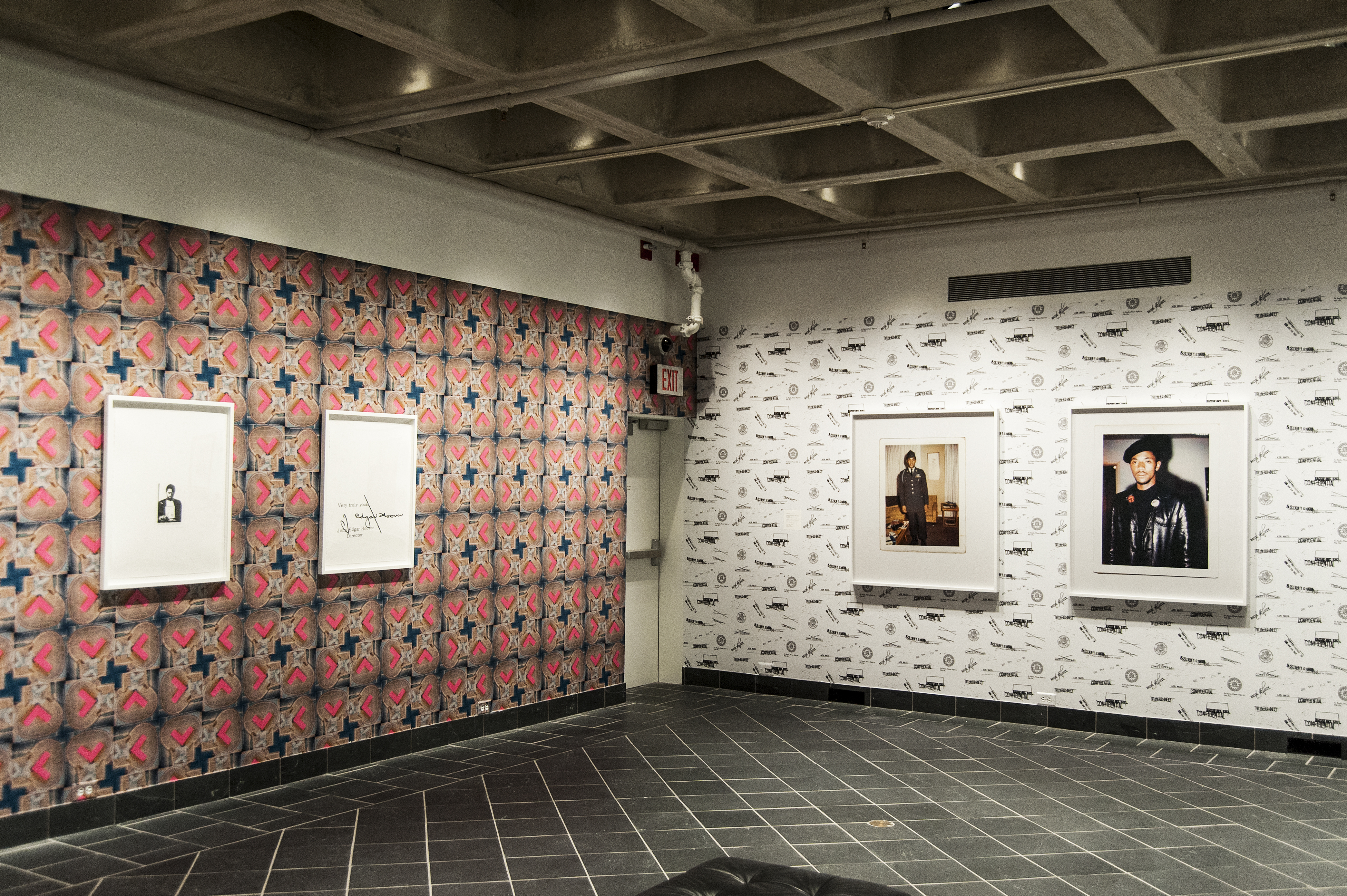By THERESA DIFFENDAL, Editor-in-Chief
Photos by ABIGAIL WEBSTER
In Dear 1968,… artist Sadie Barnette transforms Haverford College’s Cantor Fitzgerald Gallery into a bold and inspiring reclamation of the 500-page file the FBI compiled on her father during his time in the Black Pant her Party.
In 1968, Rodney Barnette was only 24 years old and already a drafted veteran of the Vietnam War, where his nephew was killed in action. Rodney attended the funeral in Los Angeles afterward, where he saw first-hand America’s institutionalized violence and police brutality.
In an interview with Artsy, he recalled, “Police shot some black men in L.A. and were going on military operations in the black community. They had Ku Klux Klan in Compton, California, that tried to drive black people out of Compton, burned crosses on property and so forth. Something had to be done.”
According to Sadie, this drove home the message that Rodney’s nephew had fought and died for a country that wouldn’t fight for him.
In response, Rodney began the Compton chapter of the Black Panther Party (BPP). He told Artsy reporters, “[The Black Panther Party] symbolized a resistance to oppression that we felt as black people in our communities. The most sensible and reasonable thing to do was to join an organization that was dedicated to ending that.”
Untitled (Dad 1966 and 1968) covers one of the large walls that runs the width of the gallery and pays homage to Rodney’s journey for liberation. Two photos of Rodney hang side by side against a backdrop reproduction of the various official CONFIDENTIAL stampings that adorned the FBI’s documents. On the left, he’s captured sporting his decorated army uniform. On the right, in stark contrast, is Rodney in a black leather jacket and beret, a wardrobe synonymous with the BPP.

The wall opposite the files is covered in wallpaper made from repeating, rotated images of a young Black child sitting in a wicker chair. The photo is in the style of the now-iconic image of BPP leader and founder Huey Newton sitting in a wicker chair with a gun in one hand and a spear in the other. The inclusion of the child represents the FBI’s invasion of the public and private life of black Americans. A pink game piece covers the child’s face, making the message universal instead of centered on an individual.

In her essay on Sadie’s exhibit, Sampada Aranke, an Assistant Professor in the School of the Art Institute at Chicago, notes the BPP “called for a full-scale revolution in the U.S. in order to eradicate capitalism, racism, sexism, and homophobia as part of the full realization of Black liberation.”
Some government officials saw this goal of justice for racial inequalities as a threat to continued white dominance in American society. Accordingly, in September 1968, J. Edgar Hoover designated the BPP as “the most dangerous threat to the internal security of the country.”
Soon after, Rodney and other high-ranking BPP members were put under (illegal) surveillance. Some surveilled members were killed as a result.
The main wall in the Cantor Fitzgerald Gallery features a row of selected pages from the 500-page FBI file the Barnette’s secured after filing a Freedom of Information Act request. All the pages are mounted on neon-pink boards which radiate an ethereal pink aura. Some of the pages sport glitter, rhinestones, and pink spray-paint, an expression of Sadie’s efforts to reclaim her father’s life and work.

“Glitter is about seduction and joy, but also artifice,” Sadie told Haverford Assistant Professor of Visual Studies Christina Knight. “In the particular instance of this project about my father being under the surveillance of the FBI, I figured glitter and pink and rhinestone hearts would be the most antithetical to J. Edgar Hoover’s agenda.”
The files record Rodney’s every movement, from when he boarded a plane to Chicago in 1972 to his relationship, where he lived with a woman to whom he was not married. The FBI used this latter detail to have Rodney fired from his work as a U.S. Postal worker.
By covering some of the text with graffiti, Sadie covers misinformation about the BPP spread by the FBI and recalls her own history of “tags,” or an artist’s personalized signature in graffiti. In doing so, she effectively integrates her story with her father’s, constructing community and shared struggle from the FBI’s illegal and invasive practices.
The Tri-Co has its own history with FBI surveillance. In 1974, Bill Davidon, a former Haverford physics professor, was part of a group of anti-war activists and helped organize a break-in at an FBI office in Media, PA. According to The Guardian, they uncovered documentation of the FBI’s surveillance of the peace and civil rights movement and an attempt by agents to have Martin Luther King commit suicide. According to Sadie, they also discovered that the “FBI was conducting surveillance on every black student at Swarthmore College.”
Surrounded by other glittery, dream-like framed photos of her father is a large black and white drawing featuring in delicate cursive the words “Dear 1968, Love, 1984.” It’s eye-catching and bold; at first you can’t even tell it’s been done by hand in graphite pencil. The “Love, 1984” tethers father to daughter, connecting her father’s time in the BPP starting in 1968 to Sadie’s birth in 1984.

See more pictures of the exhibit at the HaverBlog entry on Sadie Barnette’s exhibit.
